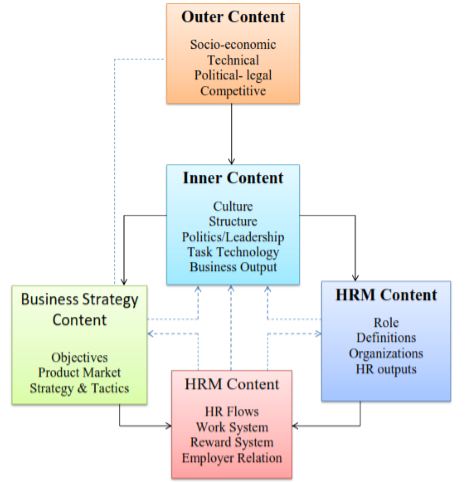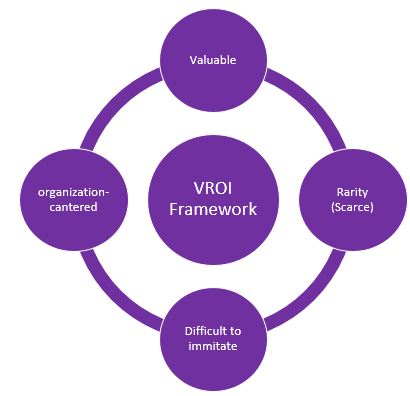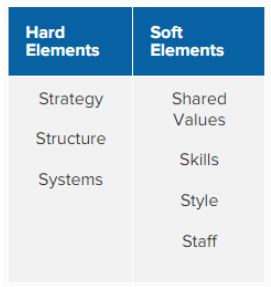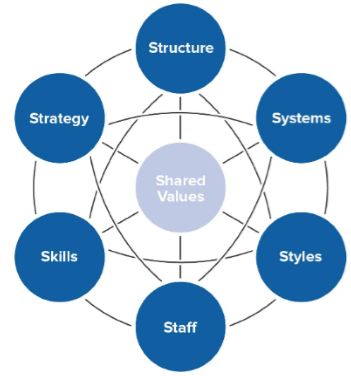Introduction
Strategic Human Resource Management at Audley will be evaluated in this report by applying appropriate theories and models. Strategic human resource management uses strategic approaches to achieve HR strategies in close coordination with corporate and business objectives. Concepts, models, theories, and current issues of strategic human resource management have been applied in this report with the application of the above concepts in a travel and tour operating company called Audley Travel. This is a UK-based travel and tour operator having offices in the UK, Ireland, Canada and the USA (Audley Travel, 2020). According to Financial Times (2015), Audley is the largest tour operator in the tour operating market in terms of making the tour really tailor-made. The company was established in 1966, and it is a privately owned tour operator. It has a range of tourist experts who have specializations in specific areas and who share their best experiences with travellers. Audley believes that it has a deep impact on the areas where it makes tours, and it has sincere responsibility for those areas (Audley Travel Group Ltd., 2020). Being inspired by responsibility, Audley always partners with local communities where it travels, and they encourage local communities of that locations to preserve nature, indignity, natural resources and wildlife (Audley Travel Group Ltd., 2020). The company also makes sure that the tours and travel do not hamper the harmony of the locations.
HR practices at Audley are full of benefits and facilities for employees. Work is fun here, there are different celebrations such as summer parties, food festivals and trips for top performers (Audley Travel Group Ltd.-1, 2020). Audley encourages well-being in the work file by encouraging people to take part in the on-site gym, cycling, yoga, and circuit classes. Every employee will get a chance to make a foreign trip at any time of respective employees. Employees will get insurance benefits such as vision insurance, and dental insurance for all full-time employees (Audley Travel Group Ltd.-1, 2020). Working with Adley means work-life balance through making an excellent combination between personal life and work. Based on requests from employees, Adley has reduced working hours from 39.5 to 37 hours so that employees can spend more time with their families (Audley Travel Group Ltd.-1, 2020).
You may feel interested to read below blogs:
Organizational Behaviour at MC Donald’s
Social Psychology at Organizations
Different approaches to recruitment and selection
Impact of major current trends and development on HR strategy
Macroeconomic business environment and HR strategies cannot go isolation; rather, HR strategies and policies are seriously affected by current trends. This section has critically analysed the impact of current trends on Audley’s HRM strategies.
Ever-evolving demographics: The combination of the population is changing in the UK and in European countries. As a result, people are getting older, and there is more combinations of people from different countries, ethnicity and religions (Daley, 2012). All these changing demographics have great influence on the HR strategies of Audley. For example, Audley needs to consider diversity in the workforce in terms of religion and nationality. Additionally, the company also need to be sensitive and inclusive in cultural values because diversified people will have different cultural values, which means Audley needs to accept cultural diversity.
Increasing use of digital technologies, data, and analytics: Advancement of technologies, data-driven decision and analytics have raised the use of digital technologies, data and analytics in making HR decisions (Mello, 2014). HR managers at Audley are also influenced to use the above technologies in many areas of HR decision-making. Before recruiting a candidate, HR adopts strategies such as checking the social media profiles of employees to check their personality and social activities and to know how they are. HR also stores comprehensive data regarding the attendance, and performance of individual employees, later on, Audley can use those data in required decision-making and in determining training needs for employees.
Emphasizes leadership development programs: The business world has become much more competitive ever than in the past, the such a competitive situation has encouraged companies to develop the next level of leadership as a continuous process (Wright and McMahan, 2011). These trends have influenced Audley to adopt leadership development programs. These have also affected other contemporary businesses which have viewed the future as an opportunity to grow. This concept will help Audley to regularly emphasize the potential employees to make them leaders for future generations. In return, potential employees will be motivated to stay in the same company considering a prosperous future.
HR managers help business leaders: Business leaders and HR managers/leaders cannot go isolated; rather they have to move the hand to hand because both need to help others (Lengnick-Hall, Beck, and Lengnick-Hall, 2011). This trend of growing collaboration among business leaders and HR managers has made companies, including Audley think about making a good bridge among them. For example, when business leaders come up with a concept of a new business model or develop employees in a new manner, then it comes the necessity of an HR manager will implement the necessity for employees.
Increasing competition for talented candidates: Given the increasing competition in the business world, companies are searching for talented employees (Jackson, Schuler, and Jiang, 2014). This trend has influenced HR of Audley to attract new talents and retain them. To attract new talents, it takes different approaches, such as offering attractive benefits, facilities, financial and non-financial benefits and rewards. Additionally, it takes a number of strategies to retain talented employees.
How internal and external factors affect HR strategy and practice
Corporate and business objectives affect HR strategies and practices: Corporate and business objectives are internal factors in a company, and they can have a serious impact on how HR managers make strategies and do HR practices (Huselid, and Becker, 2011). One of the corporate objectives of Audley is to emphasize on the work-life balance of employees and to engage and motivate employees through a wide range of rewards and benefits (Audley Travel Group Ltd.-1, 2020). As a result of this internal factor, Audley has taken a number of strategies and changed their HR policies, such as decreased working hours, implemented on-site-gym etc.
Operational changes affect HR strategies and practices: Operational changes are internal to a company, and such changes affect how a company makes HR strategies and HR policies (Kramar, 2014). For example, Audley adopts new operations of integrating Enterprise Resource Planning (ERP) to make better coordination among its activities. Now running an ERP system is tech-oriented, and a company needs to train the employees so that they can use the new system. Thus, the HR of Audley needs to incorporate employees for training and development on how to use the ERP system.
Move to freelance/work-from-home work: A company’s decision to move to use a number of freelancers or employees who can work from home may rise because of external circumstances such as COVID-19 (Thornton, 2020). Such factors seriously affects HR decisions and practices. Due to this factor, it is likely that Audley will encourage employees who don’t necessarily need to be present at work, to work from home. It is also likely to happen that some posts will no longer be available, and such posts could be met through freelancers. Accordingly, HR managers of Audley need to adapt to new policies.
Increasing use of social media and employees’ social contact with employers: Increasing use of social media and social factors are external issues and have a serious impact on an organization (Armstrong, 2011). Social media channels and their users have increased tremendously in recent times. As a result, it has a serious impact on Audley on how its managers and leaders deal with employees. Due to social media, distances between executives and senior business leaders have decreased, and junior employees’ opinions are being counted. HR now has to take opinions from employees of all levels, which was not the case in the past.
Economic slowdown encourages cost reduction: Economic slowdown and, thus, economic inactivity have a varied level of impacts on HR’s decision and policy making (Gratton, Hailey, and Stiles, 2011). The such economic slowdown has happened and will be intensified during post-COVID 19 period (Anderson et al., 2020). It will encourage Audley HR to reduce costs even by laying-off employees, which have become a regular practice in recent times (Anderson et al., 2020).

Figure 1: The Warwick Model of HRM
The above model explains how internal factors, external factors, and HR context can impact HRM content. The above analysis has clearly shown that external factors have the strongest influences on how HR moves in a company, including Audley. The outer environment of Audley mainly affects the inner environment. Based on the impact, Audley makes business strategies. Finally, HRM contents are affected.
Contemporary theoretical and practical knowledge of HR development
Theories and concepts related to growth and development of strategic HRM
Resource-Based view of a firm:
Resource-Based view of a firm: The proponents of resource-based view model of SHRM are Wright, and Snell (1991), who argued that a firm should emphasize enhancing internal capabilities and strength rather than focusing on external competitive forces. Advocates of the model also revealed that employees should play the most important role in this regard and employees should be valuable, scarce, organization-cantered and difficult to imitate (Wright, Dunford, 2001).

Figure 2: VROI Framework of Resource-Based view (Wright, Dunford, 2001)
The above framework illustrates that HR managers at Audley should primarily focus on improving the inner capabilities of the employees rather than thinking about what is going on in contemporary companies. HR managers should also ensure that their Human capital is scarce, and valuable, they are difficult to imitate, and they are very organization-oriented (Collins, 2020).
However, all firms do not have the capabilities to act as per above-suggested scenario. For example, an SME hospitality firm might not have the resources to include intensive training and development programs to make their workforce unique, valuable, and inimitable.
The behavioural perspective: This model perceives that employees’ behaviour is the mediator to make coordination between organizational strategies and the performance of a firm (Marler, and Fisher, 2013). The proponents also argued that a company adopts different approaches, strategies, policies and practices to control and moderate employees’ behaviour based on organizational objectives, which in turn results in the performance of a firm. Audley has a number of organizational strategies, such as being the best tour operator, being an environmentally responsible tour operator etc. To achieve these objectives, Audley arranges different training programs for employees so that they can perform, which results in Audley’s performance thereof.
SHRM is always forward-looking: Strategic view of HRM is always forward-looking in terms of developing HR strategies and policies as well as contributing to achieving corporate and business objectives (Van Buren, Greenwood, and Sheehan, 2011). In doing so, the strategic view of SHRM always asks two fundamental questions: where the company wants to go, and it will reach the destination. This concept adopts a long-term view of intent as well as strategies to achieve the intent. This theory has shaped SHRM in an excellent way by enhancing its value theory.
The forward-looking concept of SHRM plays an important role in Audley because it helps the company to think of sustainable strategies and approaches to reach its goals.
HRM strives to find strategic fit: One important concept of SHRM is that it finds the best strategic fit between external and internal forces and how the company compiles strategies (Paillé et al., 2014). This theory plays a significant role in any organization of size because the absence of collaboration between macro and micro environmental forces and organizational strategies will lead to failure to reach business objectives. For example, external forces have advised Audley to move to freelance employees and cost reduction due to the impact of the economic slowdown which is a result of COVID-19. Now, if Audley adopts indiscriminate recruitment strategies paying no heed to external forces, its cost will increase the strategic objectives and suggestions will not meet. As a result, the company will fail to cope with the competitive environment.
How appropriate change management models support HR strategy
Change management is about bringing organizational changes and making strategies to make the change happen. The top management of an organization decides to change, but these are employees who implement the change. In this case, HR managers should play a significant role to orient employees with required training or development to enable them to make changes. This section has applied three change management models showing how change management and HR are linked and implementation of proper change management model support HR strategies.
Lewin’s Change Management Model: This model implies that to bring a change in an organization, it should follow the unfreeze-change-refreeze approach of change (Cameron, and Green, 2019). It is natural that employees are change resistant, they like to follow the status quo; in contrast, management frequently brings changes. To make the change smooth, Audley should break all the rules (unfreeze), then it should implement the new rules (make change), and finally, Audley should make official notice and rules to follow the new rules for all.

Above demonstration shows how Audley should implement the change process. For example, working from home is a new concept for Audley employees. As a result, many will not feel comfortable in practice. HR managers of Audley have a direct role in the above process because they need to think about how employees can make themselves adapt to change. HR managers should orient and guide employees on the benefits of working from home to convince them to agree with the company’s decision. The change management model also helps HR in strategic thinking on how to help and guide employees to make change happen. For example, the above pictogram will assist the HR of Audley in knowing the change process, and they will guide employees accordingly.
McKinsey 7S Model:
This change management model is an extensive one which focuses on hard and soft elements of change and guides a company to make the required strategies and approaches to make the change (Hayes, 2018).

Figure 4: Hard and soft elements of McKinsey 7S model (Image reproduced from Emerald Works Limited, 2020)
As the above diagram shows, there are 7 elements of the change management process, strategy, structure, and systems are hard elements which the top management of a company can easily change. In contrast, shared values, skills, styles, and staff are soft elements which are shared among employees (Hayes, 2018).

Figure 5: McKinsey 7S model (Image reproduced from Emerald Works Limited, 2020)
Audley first needs to make strategies for enhancing competitive advantage over other competitors in the market. In the second stage, it needs to look into the structure of reporting and controlling. Audley should make sure that the structure is as flat as possible to make quick decision-making (Wirtz et al., 2016). In the third stage, Audley should evaluate the system and procedures of daily activities of getting the jobs done. The system should be efficient. The company should also make sure that the whole organization share one value, should follow democratic or transformational leadership styles as appropriate, and finally, skills of staff should be improved so that they become capable of implementing corporate and business objectives.
The above analysis shows that HR management is closely involved in the whole model and its application in Audley. For example, while making strategies business leaders, they must need to collaborate with HR leaders who play a great role in terms of making their HR strategies which, in turn, improves employees’ capabilities.
Contribution of HR management on sustainable business performance and growth
How HR outcomes can be monitored and measured
Assessing HR outcomes and HR performance is important for any organization in order to evaluate HR performance and its impact on organizations. The below analysis outline some of the tactics through which Audley can assess and evaluate HR performance.
Employee Satisfaction Index: This technique measures the level of satisfaction among employees of Audley, which can compare employees’ level of satisfaction over different periods and with contemporary other organizations (Anca-Ioana, 2013). Audley will come to know if the satisfaction level has increased, and knowing the outcome will help Audley to know the effectiveness of employee reward and incentive programs taken by HRM. This will also guide the company to take corrective actions.
Employee Engagement rate: This metric refers to how much attentive, sincere, and engaged employees are in an organization in performing their assigned jobs (Buller, and McEvoy, 2012). A high level of employee engagement and attention rate will imply that employees are doing their best to reach business objectives; this also implies that HR initiatives such as foreign trips, on-site-gym etc., facilities adopted by Audley HRM really worked. This reflects that the company’s HR practices have worked positively, and it will encourage Audley to take similar techniques.
Absenteeism rate: This technique refers to the number of absent days compared to the number of attended days in a certain period (Jiang et al., 2012). Audley can compare employees’ absenteeism rates in different periods or with those of other companies. The reduced absenteeism rate reflects that the strategies taken by Audley to reduce absenteeism rate worked. As a result, employees have become more regular in attending offices.
Employee turnover rate: Employee turnover rate over time is an important technique to evaluate HR strategies. A high employee turnover rate at a certain period implies that HR strategies and their rewards and benefits are not sufficient enough or strategies to retain employees (Besma, 2014). Audley will be able to evaluate its HR effectiveness by looking at the turnover rate. The high turnover rate means that HP’s practices regarding benefits, rewards and incentives are sufficiently enough to retain employees.
Employee productivity rate: This is one of the most important metrics to evaluate the performance of HR strategies of a company, this metric evaluate the productivity of employees through how much employees can meet the targets in their respective fields (Noe et al., 2015). A high productivity rate in employees’ respective fields at Audley means that employees are performing their best and HR strategies are effective.
How effective HRM and development can support sustainable performance and growth
Employees in recent days have become so much concerned about sustainability issues, even many of them do not want to join a company if it has no sustainability practices at offices (Stahl, Bjorkman, and Morris, 2012). In the below section, different HR strategies that can enhance sustainability at an organization are evaluated below:
Defining the company’s purpose: Audley first should declare its intention of being a really sustainable company in all respect. It should explicitly explain how it applies sustainable tourism, how it practises sustainability at offices and how it interacts with suppliers in a sustainable manner. Explanation of such practices will generate a sense of collaboration among employees first, then with other stakeholders.
Assessing workplace practice: HR or a company must assess the practices at the office and production facilities to ensure that they follow sustainable approaches (Waiganjo, 2014). This may range from using less paper-based work to no paperwork, rather, all communication, and documentation can be done electronically. Though this is an investment incentive, it will bring good returns once installed. Audley should ensure that it uses less paper, install solar panels for electricity, and uses daylight to release pressure from electricity through using green-rated buildings. These are only a few examples, there are numerous approaches through which Audley can follow sustainable approaches at the workplace.
Make sustainable recruitment: Employees play the greatest role in sustainable practices because they implement all the policies taken by HRM (Guan et al., 2016). The whole selection and recruitment process can be completed online without using any paper, this will grow the habit of sustainability at the beginning among candidates. Additionally, Audley can express its sustainable objectives during the interview.
Arrange training: Sustainability will not come overnight, rather it takes training and informing employees about how they can adopt effective, sustainable practices. This will significantly help Audley to follow sustainable practices at the workplace.
Conclusion
HR strategies and external forces do not go isolated, rather, external and internal forces have a significant impact on HR strategies and approaches. It has been found in the report that external forces heavily affect HR strategies and managers to move in certain ways. SHRM theories and concepts play a significant role in understanding how strategies, approaches, and models of HR contribute to achieving business and HR objectives. Change management models and HR strategies are closely related to each other, HR managers help companies to implement changes. HR performance can be evaluated through employee performance, retention rate etc. HR also plays an important role in achieving the sustainable objectives of a company.
References
Audley Travel, 2020. Audley Offices. Retrieved from: https://www.audleytravel.com/contact-us/offices [Assessed on 17 May 2020]
Audley Travel Group Ltd., 2020. Responsible travel. Retrieved from: https://www.audleytravel.com/responsible-travel [Assessed on 18 May 2020]
Audley Travel Group Ltd.-1, 2020. Audley Travel Team Benefits. Retrieved from: https://careers.audleytravel.com/culture/benefits [Assessed on 18 May 2020]
Ravisankar, M. and Sakthivendan, K., 2013. Human resource management practices in Indian IT industry–an overview. International Journal of Exclusive Management Research, 3(1), pp.1-14
